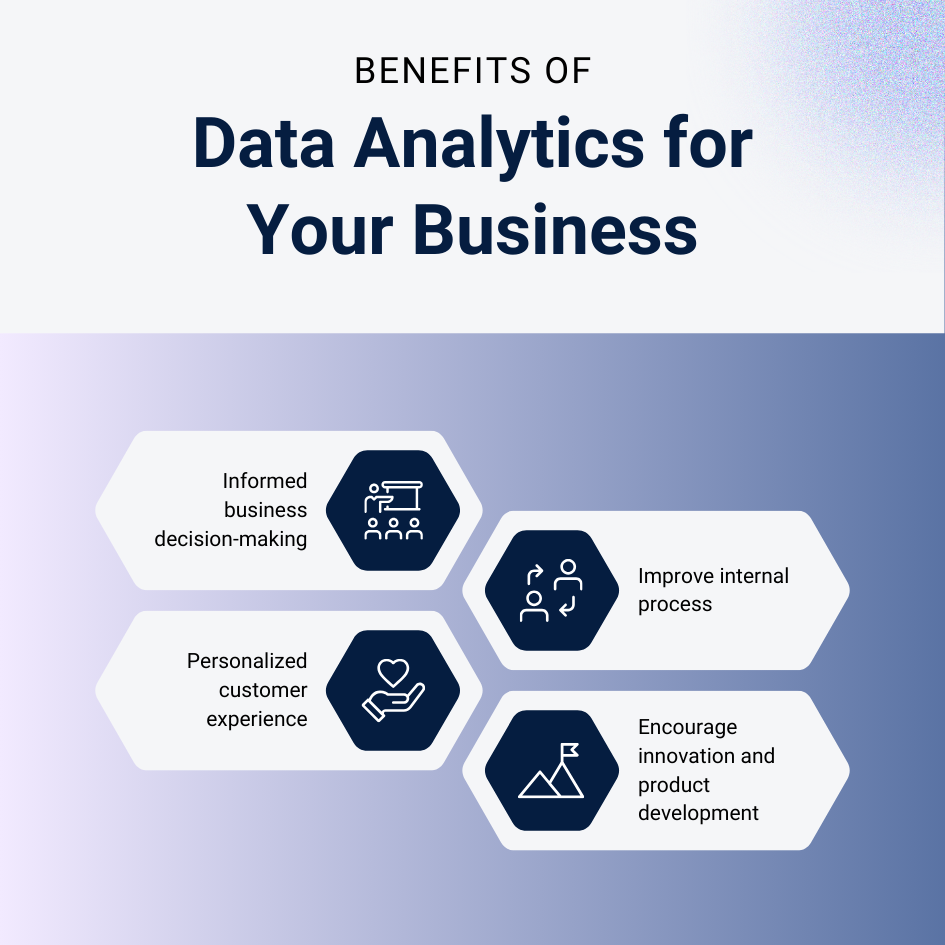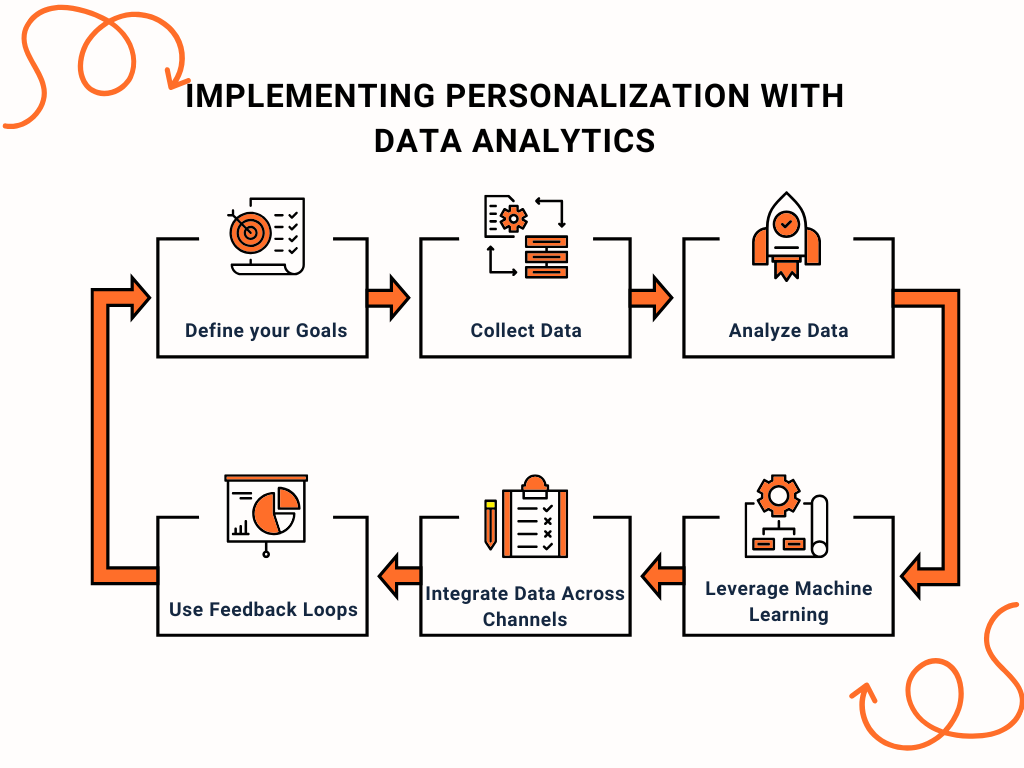Businesses today are constantly looking for ways to optimize data to drive customer experience. Data analytics to improve customer experience has become a hot topic in delivering a seamless and personalized experience, enhancing overall customer satisfaction. Tailor-made messaging goes beyond just a customer’s name in the email. That’s a given. But hyper-personalization is now an altogether different ball game. It involves a deep understanding of customer behavior, expectations, and preferences to unlock a new way of how brands communicate with their customers individually. The key to this secret lies in data analytics.
By leveraging data analytics to improve customer experience, brands can create compelling customer stories that not just meet customer needs and expectations but also go beyond the obvious. In this article, we explore different personalization strategies that can be used with the help of data analytics. These strategies of personalization with data analytics to improve customer experience also enhance retention, loyalty, and customer satisfaction.
Benefit of Data Analytics to Improve Customer Experience
Some of the key benefits of data analytics to customer experience include improved internal processes, personalized customer experience, encouragement in innovation and product development, and finally, making informed business decisions that ultimately increase revenue.

Data analytics to improve customer experience allows businesses to track, analyze, and act on customer interactions across various touchpoints. It is a powerful tool that enables brands to move from a generalized strategy to a highly organized, planned, and hyper-personalized customer interaction. Using data analytics to understand customer journeys can help businesses pinpoint their pain points and challenges; thus getting a peep into the key areas that need to be addressed and improved. This enables more tailored experiences for customers.
One of the most important aspects of this process is collecting and analysing customer data from across channels, like websites, social media, and customer service interactions. By using these methods of data collection, businesses identify trends, predict customer behavior, and recommend products or services that can align to individual preferences.
Personalization Strategies Enabled by Data Analytics
Predictive Analytics for Personalized Recommendations
A major way to leverage data analytics to improve customer experience is through predictive analytics. By analyzing past behaviors, businesses can forecast future actions, enabling them to make personalized product recommendations in real-time. For example, e-commerce giants use this strategy to suggest products based on a customer’s browsing history or previous purchases.
Segmentation for Targeted Campaigns
Another effective strategy is customer segmentation, which involves categorizing customers into distinct groups based on their behavior or preferences. With data analytics to improve customer experience, businesses can create more targeted and relevant marketing campaigns for each segment, leading to higher engagement and conversion rates.
Real-Time Personalization
By using real-time data, businesses can offer immediate, contextually relevant experiences to customers. Whether it’s customizing website content based on a visitor's browsing history or providing real-time assistance through chatbots, data analytics to improve customer experience allows companies to deliver hyper-personalized services that meet customers' needs at the right moment.
Sentiment Analysis for Improved Customer Service
Sentiment analysis is another valuable personalization strategy. By analyzing customer feedback—whether through surveys, social media, or customer service interactions—businesses can gauge customer sentiment and respond accordingly. Using data analytics to improve customer experience, businesses can identify potential issues before they escalate, offering proactive solutions that enhance overall satisfaction.
Omnichannel Personalization
Data analytics also plays a critical role in developing seamless omnichannel experiences. By integrating data from different touchpoints, businesses can ensure that customers have a consistent experience whether they are engaging via a mobile app, website, or in-store. With data analytics to improve customer experience, businesses can create a unified customer profile, enabling them to deliver personalized experiences across all channels.
Implementing Personalization with Data Analytics

Collect and Analyze Customer Data
The first step in using data analytics to improve customer experience is collecting data from all customer interactions. This includes purchase history, website behavior, social media interactions, and customer service engagements. Advanced analytics tools can then process and analyze this data, revealing valuable insights that can drive personalized strategies.
Synthesize Machine Learning for Deeper Insights
Machine learning algorithms can enhance the power of data analytics to improve customer experience by identifying patterns and trends in customer data that may not be immediately apparent. These insights allow businesses to anticipate customer needs and behaviors, delivering more personalized experiences.
Integrate Data Across Channels
For a truly seamless experience, businesses need to integrate data across all customer touchpoints. This omnichannel approach ensures that all customer interactions are accounted for, providing a comprehensive view of the customer journey. This integration allows businesses to offer personalized experiences at every stage of the journey, from awareness to post-purchase.
Use Feedback Loops to Continuously Improve
Finally, businesses should create feedback loops to continuously refine their personalization strategies. By using data analytics to improve customer experience, companies can analyze customer feedback and performance metrics to determine the effectiveness of their strategies and make necessary adjustments.
Your Key Takeaway:
Incorporating data analytics to improve customer experience is essential for businesses that aim to deliver meaningful interactions and hyper-personalized interactions. With the help of predictive insights, segmentation, and real-time data, brands create tailored experiences that boost customer satisfaction, enhance customer loyalty, and meet customer demands- all of which, sums up collectively to deliver a great customer experience.Embracing these strategies can allow businesses to stay ahead of the competitive curve and make data-driven decisions that can enhance customer journeys.
Unlock the full potential of data analytics to improve customer experience. Partner with Valuebound to implement cutting-edge strategies that enhance customer satisfaction.
FAQs
1. What is data analytics in customer experience?
Data analytics in customer experience refers to using data from various customer interactions to gain insights that help businesses personalize their services and improve satisfaction.
2. How can data analytics improve customer loyalty?
By delivering more personalized and relevant experiences, data analytics helps businesses foster stronger emotional connections with customers, which improves loyalty.
3. What tools are commonly used for data analytics in customer experience?
Popular tools include Google Analytics, Salesforce, Adobe Analytics, and various machine learning platforms that analyze customer data in real-time.
4. What is predictive analytics in customer experience?
Predictive analytics uses historical customer data to predict future behavior, allowing businesses to offer personalized recommendations and anticipate customer needs.
5. How can small businesses use data analytics to improve customer experience?
Small businesses can start by analyzing basic customer data, such as purchase history and feedback, to tailor marketing campaigns and improve service quality.



